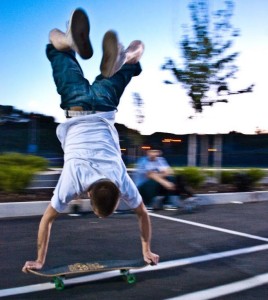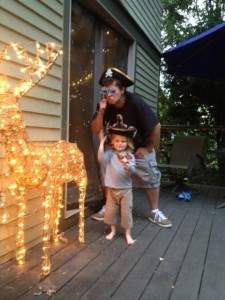This article appears in the Feb./March 2016 issue of “The Wedge” newspaper. The newest article of my regular column for that paper.
The Hidden Genius in Every Child
by Drew Beeman
When I was a pre-teen and teen I loved skateboarding. The rebellion, the attitude, the tricks, all of it! Now as an adult, I appreciate it even more, even though my board is in storage. Rodney Mullen is considered the “Godfather” of modern street style skateboarding. He invented upwards of 32 tricks, including the “ollie” that is the foundation for all other street style tricks (which he also mostly invented). Without getting to much into his bio, I will say his father was reluctant to allow him to skate and made him quit a few times, he went to college and studied biochemical engineering, won 34 out of 35 “freestyle” skateboarding competitions by the age of 24, went on to basically invent “street style” skateboarding, became an innovator and inventor creating new skateboard, and accessory designs, became a successful business man and a multimillionaire, and now gives TED talks and has other speaking engagements. He overcame much to get there, search with his name on youtube and see some awesome videos.
He has amazing skill, and physical mastery, dexterity and balance! Oh by the way when he was young he wore special boots to bed to help correct a serious pigeon toe condition. The other thing is that if you ever hear him speak you will notice something different about him. There is a lot of speculation on the internet that he may have autism or at the very least aspergers. I am not a big fan of labels, and he has never said anything public about it, but many people that have had experience with others or they themselves are “on the spectrum”, seem to agree he seems to have many of the “symptoms”. I believe that if he were a generation younger he may have had the diagnosis early on in his life. But then again so would Albert Einstein.
A large part of me has an aversion to these types of labels. For one, our society and it’s schooling system, want’s to cram all of us uniquely shaped “pegs into round holes”. Second, those labels usually come with a bunch of grant money so there is a lot of incentive to label people. Another part of me understands the labels because then we have more awareness and hopefully compassion for others, and may be able to help people more effectively.
One thing I do know for sure…all children have a hidden genius inside of them. I am coming to believe more and more that so called “disorders” like autism are really just labels to help us understand the way someone other than ourselves, or the perceived majority, thinks and functions socially. I am sure there are many success stories like Mullen’s out there and I truly believe there could be many more.
Howard Gardiner of Harvard University most famously stated his ideas about “Multiple Intelligence”. “The Theory of Multiple Intelligences” from Harvard Graduate School of Education states “The theory of multiple intelligences, developed by psychologist Howard Gardner in the late 1970’s and early 1980’s, posits that individuals possess eight or more relatively autonomous intelligences. Individuals draw on these intelligences, individually and corporately, to create products and solve problems that are relevant to the societies in which they live. The eight identified intelligences include linguistic intelligence, logical-mathematical intelligence, spatial intelligence, musical intelligence, bodily-kinesthetic intelligence, naturalistic intelligence, interpersonal intelligence, and intrapersonal intelligence. According to Gardner’s analysis, only two intelligences—linguistic and logical mathematical—have been valued and tested for in modern secular schools; it is useful to think of that language-logic combination as “academic” or “scholarly intelligence”.”
Many educators are familiar with his theory, but I believe that if we really implemented it in our practice we would see every child be successful. Like Rodney Mullen, if we allow our children to play, experiment, and explore, find their passion, and encourage them to pursue their own interests we would also see our children succeed.
Let your children play. Let them follow their own passions, interests, and dreams. Find their specific intelligence and gifts. Encourage their pursuits. You will see them find success and fulfillment. You will have released their “Hidden Genius”!
Drew Beeman is founder and director of Progressive Early Learning. For more information about learning through play and about Progressive Early Learning, visit www.ProgressiveEarlyLearning.com.









